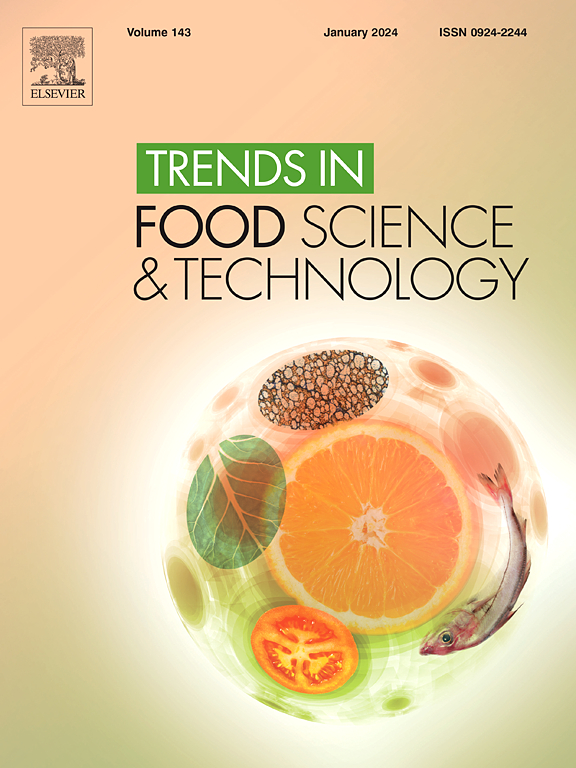From insoluble to soluble: An overview of processing methods for dietary fibers in okara
IF 15.1
1区 农林科学
Q1 FOOD SCIENCE & TECHNOLOGY
引用次数: 0
Abstract
Background:
Dietary fibers are commonly categorized as water-soluble (SDF) or water-insoluble (IDF) dietary fibers. SDF possesses more favorable techno-functional and textural features than IDF. Consequently, many different modification procedures have been suggested to increase the SDF content in various matrices, such as okara, an IDF-rich side stream from soy milk production.
Scope and Approach:
The present review summarizes the treatments reported until August 2024 to increase SDF in okara and systematically compares their efficiencies.
Key Findings and Conclusions:
Biological treatments resulted in the lowest increase in SDF followed by chemical treatments. Physical treatment techniques were very diverse, and some were found to be extremely efficient. They increased the SDF content five- to nine-fold, with size reduction being the most efficient treatment. Selected combinations of techniques boosted the SDF content even more. Most efficient were steam explosion (a subcategory of size reduction treatments) alone or in combination with enzymatic treatment, which increased SDF from 3.5 to 31.9% DM on average, and the alkaline treatment of extruded okara, which increased SDF from 2.8 to 34.1% DM.
Although current treatments achieve high final SDF amounts, one-third of the measured fiber content remains insoluble. This limitation could be addressed by a sound understanding of the structure of the SDF-containing composites and of the dietary fibers themselves, which could enable the design of treatments optimized for higher SDF contents. Higher SDF contents can improve the techno-functional and nutritional properties, as well as the economic value of okara.
求助全文
约1分钟内获得全文
求助全文
来源期刊

Trends in Food Science & Technology
工程技术-食品科技
CiteScore
32.50
自引率
2.60%
发文量
322
审稿时长
37 days
期刊介绍:
Trends in Food Science & Technology is a prestigious international journal that specializes in peer-reviewed articles covering the latest advancements in technology, food science, and human nutrition. It serves as a bridge between specialized primary journals and general trade magazines, providing readable and scientifically rigorous reviews and commentaries on current research developments and their potential applications in the food industry.
Unlike traditional journals, Trends in Food Science & Technology does not publish original research papers. Instead, it focuses on critical and comprehensive reviews to offer valuable insights for professionals in the field. By bringing together cutting-edge research and industry applications, this journal plays a vital role in disseminating knowledge and facilitating advancements in the food science and technology sector.
 求助内容:
求助内容: 应助结果提醒方式:
应助结果提醒方式:


